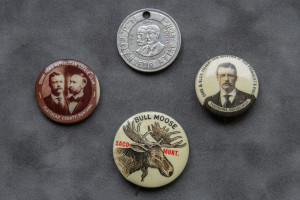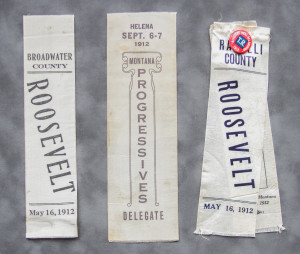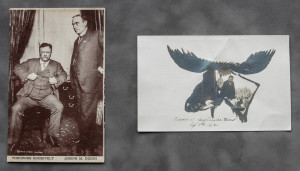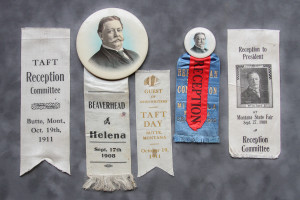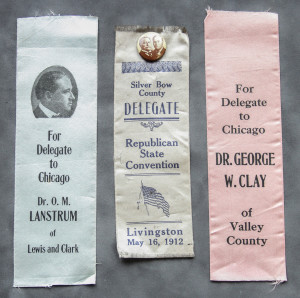As the election of 1912 approached, the Republicans faced a significant ideological division within their party. When Teddy Roosevelt left the White House in March of 1909, the progressive wing of the party looked to be in good position. They had achieved legislative success, passing a number of bills limiting the trusts and promoting social reform such as child labor laws and food and drug regulations. In addition, they had left the executive branch under the leadership of Teddy’s hand-picked successor, William Taft, to continue their progressive agenda.
Unfortunately for the progressives, it soon became apparent Taft was strongly aligned with the conservative stalwart faction of the party and had abandoned the progressive message. In fact, during the 1910 off-cycle election, Taft led a concerted effort to purge the party of the progressives within the party’s local machinery nationwide. This led the progressives to initiate the “back from Elba” movement in hopes of returning Teddy to the White House in 1912. At that time there was no consistent mechanism to select delegates to the national convention; few states had open primaries, most selected their delegates in closed conventions or limited precinct primaries or some combination of the two.
Montana was a microcosm of the national picture. Taft had made trips to Montana in 1909 and 1911 to bolster the stalwart machinery of the state party led by Edward Donlan, the unsuccessful candidate for governor in 1908. The progressive faction in Montana was led by Senator Joseph Dixon who became TR’s national campaign manager. In Montana, like in other states the delegate selection process was inconsistent in various precincts and counties. The Stalwarts controlled the machinery in most counties with the financial and strong lobby support of Amalgamated Copper which deeply desired an end to Teddy’s war on large trust monopolies.
As the state convention held May 16th in Livingston approached, it was apparent that Taft controlled the majority of the 657 delegates. His control of the convention was assured when the Silver Bow County Convention (home of Amalgamated Copper) awarded all of its 65 delegates to Taft. Of note, there was no primary held in this county and as in many counties Taft’s operatives “steam-rolled” the delegate selection. In the Great Falls Tribune coverage of the convention, they estimated that 2/3 of the delegates were against Taft but were unable to vote their personal convictions. This impression is supported by the Broadwater Roosevelt ribbon from the convention; Broadwater county delegates were committed to Taft.
There are a number of ribbons available from the state convention some of which are illustrated in this publication. Two of the more unusual ribbons support the election of Taft delegates to the National Convention, OM Lanstrum and GW Clay. The other delegates elected to Chicago were Donlan, Charles, Baggs, Stephenson, Kenny, Dawson and Wilcomb. I wonder if similar ribbons exist for these delegates as well; ”let me know if you have seen any.
The Montana Progressive Party held their convention in Helena September 6th. Teddy Roosevelt spoke at convention and continued on to Seattle for The Washington Convention. Illustrated is a ribbon from the MT convention and a graphic post card from a whistle-stop on the way to Helena.
The division of the Republican Party in Montana resulted in a landslide victory for the democrats. Joseph Dixon spent most of his efforts running TR’s national campaign and was defeated in his efforts for reelection; their jugate postcard from 1912 is pictured. TR out-polled Taft by a substantial margin in Montana, 22,456-18,512. Dixon also did well against his stalwart rival but the remainder of the progressive statewide candidates fared poorly. Some have speculated Taft forces knew the division would result in widespread losses but calculated it would be better to lose this election than the control of their party. It seems we may have a similar situation developing in the Republican Party 100 years later with the Tea Party “revolt.” It will be interesting to see how this plays out and how it affects the party in upcoming years.
First published in the Keynoter: Journal of American Political Items Conservators Fall 2012
